I now know what the expression “Living life king size” exactly means. Today, a group of us went to a place called “Mandu”, 2 hours from
Indore, Madhya Pradesh. I didn't expect much out of the place since all the planning was done in a matter of two days, and I was initially apprehensive of my participation due to a sponsorship work. All this added to the real fun and learning we got, apart from relieving us from the near-sadistic work schedule that’s haunting (or rather, rotting) all of us.
I got so fascinated by the place that I researched a lot about the place soon after I returned. I’m only recording some very fascinating and absorbing mythological stories about which no material is on the web.
A glimpse of the place: Mandu, the place where the historic fort is located, is in
Central India, at an elevation where the Malwa plateau starts. The place is of historical significance, and is one of the semi-shattered monuments recognized and protected by the Archaeological Society of India. The fort was originally built in the 14
th century, and has been of strategic importance to all the Indian kings due to its location. It is located in a plateau where the plains from the South end and the hills of the North start, with the
Narmada valley in the vicinity. And it was initially built by the King of Bhopal, but was later taken over by the Mughals. The architecture is predominantly Indian, but there are traces of Roman, Chinese and Afghan architecture.
The starting point was the ‘Jama Mosque’ where our guide, citing the differentiating factors between mosques and Hindu monuments, went on to prove that the monument wasn’t exactly a mosque. Especially interesting was the acoustic design of the monument. Since the kings addressed audience en masse from the monument, it was designed with special dome structures aimed at amplifying and carrying even casual whispers to long distances. Many such structures were also visible at even intervals of about 170 meters to propagate messages for as long as 50 Kms within a span of 5 minutes, primarily using echo techniques. Below is a snap of the Mahal…
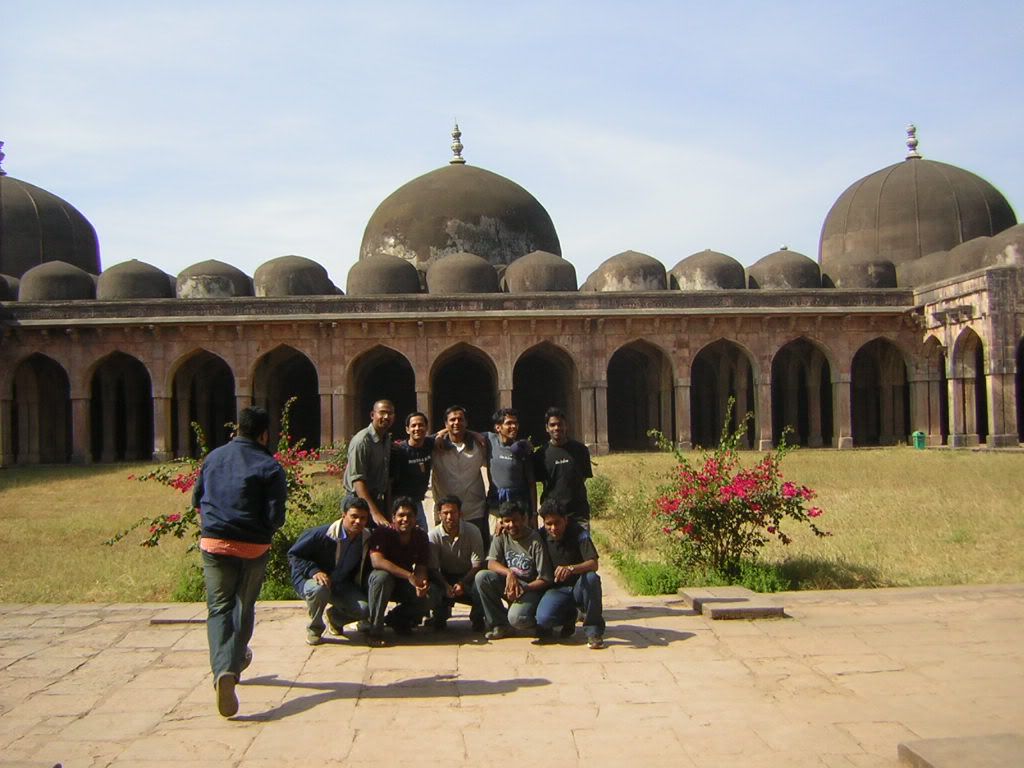
The other story was about a dancer Roopmati for whom a high elevation monument was built. The monument enabled a high-altitude view of the sacred
Narmada River, apart from serving as an army watch tower for guarding miles of surrounding plains. Akbar, the great Mughal king, apparently came to Mandu to take Roopmati along with him, thereby forcing her to commit suicide by swallowing a diamond…
We then went to monuments that saw one of the first usages of aqueducts and siphon systems in the world. Many of the monuments had facilities like sauna,
hot springs, and even sprinklers… all using basic physics principles to function.
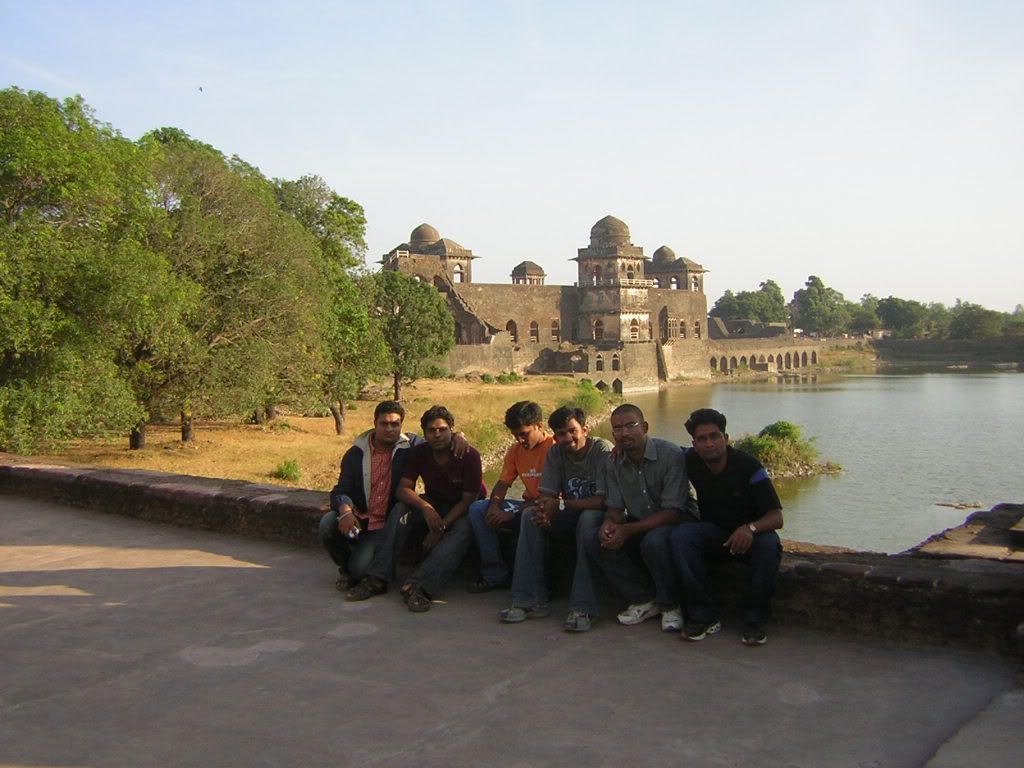
Next was the interesting story about the underground chambers of queens. The chambers had two floors beneath the ground, and the entrance was through a casual looking ‘well’. In the case of emergencies, the well, which normally had very less water in it, used to be filled with water, after hiding the Queens in the underground chambers. The only entry to the chambers was through the well. For gaining access, one had to dive into the well, and then access the gates in the waters below to further gain entry to the upper chambers where the queens were camped.
A snap as we gaze into the waters of the clandestine well…
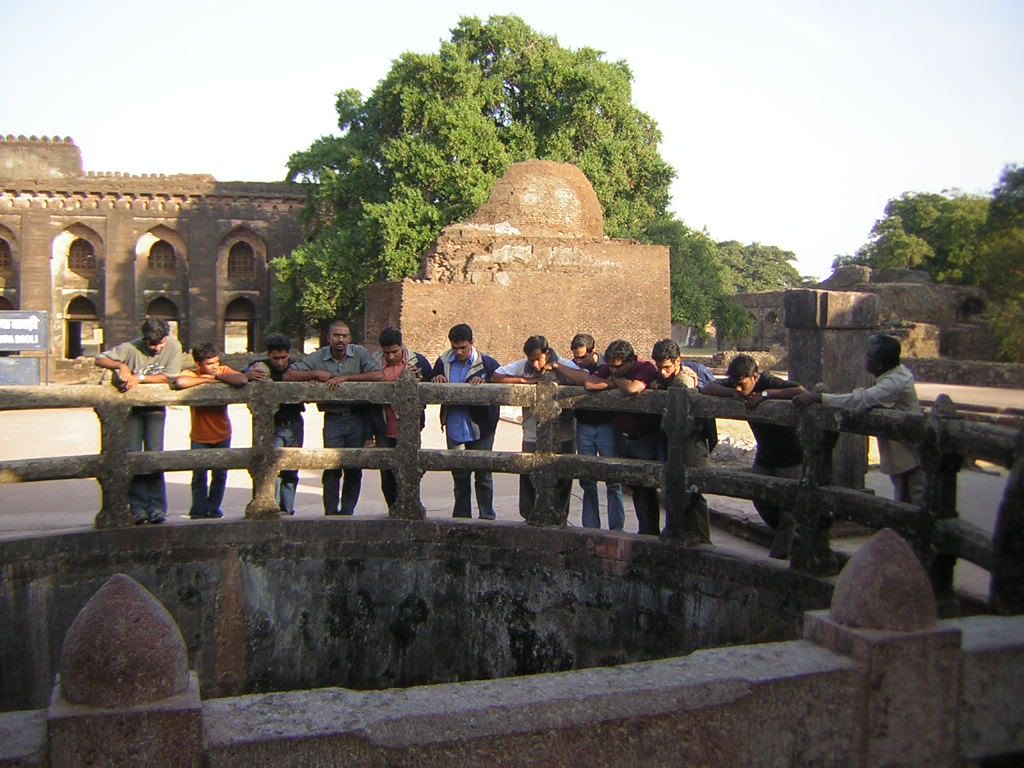
Next in line was the ‘Ship Mahal’ - a structure that was completely unobtrusive from the outset, but later showed the magnitude as we entered its gamut. Huge structures made of red marbles from Rajasthan gave the fort a majestic look. With two flanking artificial lakes and many pools that were aesthetically designed (shape of lotus etc), the forts were breathtaking.
A picture is worth a thousand words…
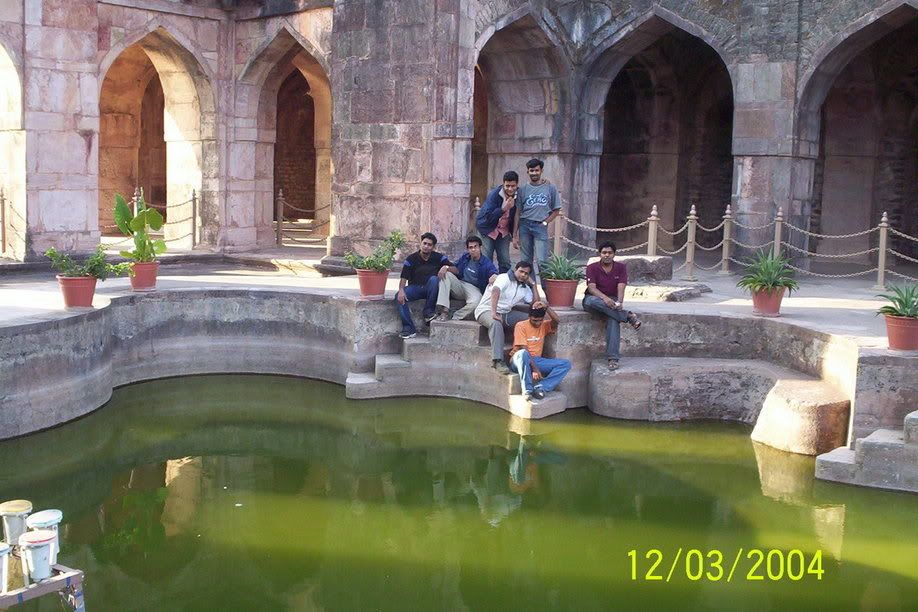
I’ve uploaded a lot of pictures in
http://photos.yahoo.com/meetgovar
<>The start... (Urs truly, Sudhir, Senthil, Srickant, Nirmal, Chandoo, Jam, Arun, Krishnan)
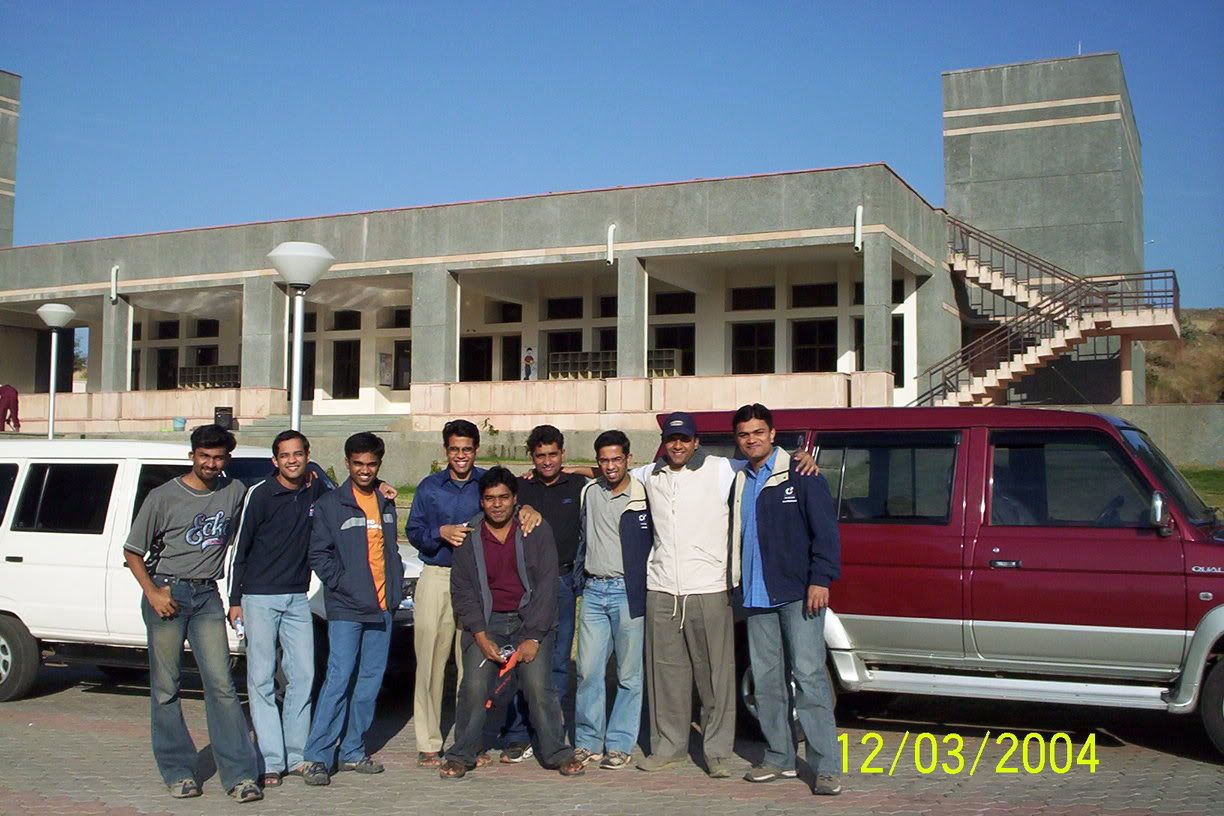
In all, it was a terrific journey back into history. After witnessing the engineering prowess and wisdom our forefathers exhibited, I’m truly spellbound.






